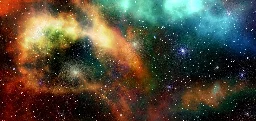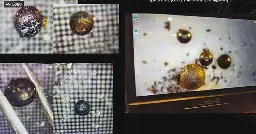
The "cosmological constant," Is also known as the Hubble constant, it refers to the rate of expansion in the universe. By knowing the speed of expansion it would be possible to "Rewind" the universe (like a video) to get an estimation of the universes age. I believe the authors are suggesting that dark energy has a bigger effect on the red shift than previously estimated.
As for Dark energy....
That is a topic of much discussion, there is "Dark Matter" and "Dark Energy" that we know about, thanks to Einstein. When they refer to either it's safe to say that the don't fully understand what they are only that they are. Personally I believe that Dark matter is just a particle that has yet to be discovered, and that Dark energy is a result of that particles interaction with matter.
Sorry, I have noscript installed, and it was enough to bypass its paywall.
Story
Our universe could be twice as old as current estimates, according to a new study that challenges the dominant cosmological model and sheds new light on the so-called "impossible early galaxy problem."
The work is published in the journal Monthly Notices of the Royal Astronomical Society.
"Our newly-devised model stretches the galaxy formation time by a several billion years, making the universe 26.7 billion years old, and not 13.7 as previously estimated," says author Rajendra Gupta, adjunct professor of physics in the Faculty of Science at the University of Ottawa.
For years, astronomers and physicists have calculated the age of our universe by measuring the time elapsed since the Big Bang and by studying the oldest stars based on the redshift of light coming from distant galaxies. In 2021, thanks to new techniques and advances in technology, the age of our universe was thus estimated at 13.797 billion years using the Lambda-CDM concordance model.
However, many scientists have been puzzled by the existence of stars like the Methuselah that appear to be older than the estimated age of our universe and by the discovery of early galaxies in an advanced state of evolution made possible by the James Webb Space Telescope. These galaxies, existing a mere 300 million years or so after the Big Bang, appear to have a level of maturity and mass typically associated with billions of years of cosmic evolution. Furthermore, they're surprisingly small in size, adding another layer of mystery to the equation.
Zwicky's tired light theory proposes that the redshift of light from distant galaxies is due to the gradual loss of energy by photons over vast cosmic distances. However, it was seen to conflict with observations. Yet Gupta found that "by allowing this theory to coexist with the expanding universe, it becomes possible to reinterpret the redshift as a hybrid phenomenon, rather than purely due to expansion."
In addition to Zwicky's tired light theory, Gupta introduces the idea of evolving "coupling constants," as hypothesized by Paul Dirac. Coupling constants are fundamental physical constants that govern the interactions between particles. According to Dirac, these constants might have varied over time. By allowing them to evolve, the timeframe for the formation of early galaxies observed by the Webb telescope at high redshifts can be extended from a few hundred million years to several billion years. This provides a more feasible explanation for the advanced level of development and mass observed in these ancient galaxies.
Moreover, Gupta suggests that the traditional interpretation of the "cosmological constant," which represents dark energy responsible for the accelerating expansion of the universe, needs revision. Instead, he proposes a constant that accounts for the evolution of the coupling constants. This modification in the cosmological model helps address the puzzle of small galaxy sizes observed in the early universe, allowing for more accurate observations.
Our universe could be twice as old as current estimates, according to a new study that challenges the dominant cosmological model and sheds new light on the so-called "impossible early galaxy problem."

Our universe could be twice as old as current estimates, according to a new study that challenges the dominant cosmological model and sheds new light on the so-called "impossible early galaxy problem."
Assassin's Creed Mirage will let you 'feel' parkour through a haptic shirt.

Assassin's Creed Mirage will let you 'feel' parkour through a haptic shirt.
When top anime streaming platform Crunchyroll was first gaining popularity as a pirated-video site in the mid-2000s, Japanese animation was considered a niche form of entertainment, appealing mainly to enthusiasts known as otaku. Today, it’s a $20 billion industry spanning streaming, games and merch...

When top anime streaming platform Crunchyroll was first gaining popularity as a pirated-video site in the mid-2000s, Japanese animation was considered a niche form of entertainment, appealing mainly to enthusiasts known as otaku. Today, it’s a $20 billion industry spanning streaming, games and merchandise, and the company’s hit series, such as One Piece and Demon Slayer, have drawn millions of US and European subscribers.
New study builds on data suggesting white-tailed deer could be a virus reservoir.

New study builds on data suggesting white-tailed deer could be a virus reservoir.
Now, it's Oracle's turn to jump into the Red Hat open-source Linux code kerfuffle.

Now, it's Oracle's turn to jump into the Red Hat open-source Linux code kerfuffle.
Someone really needs to deal with abandon-ware in copyright laws.
New study reveals most classic video games are completely unavailable

New study reveals most classic video games are completely unavailable
A Harvard professor believes he may have found fragments of alien technology from a meteor that landed in the waters off of Papua, New Guinea in 2014.

A Harvard professor believes he may have found fragments of alien technology from a meteor that landed in the waters off of Papua, New Guinea in 2014.
